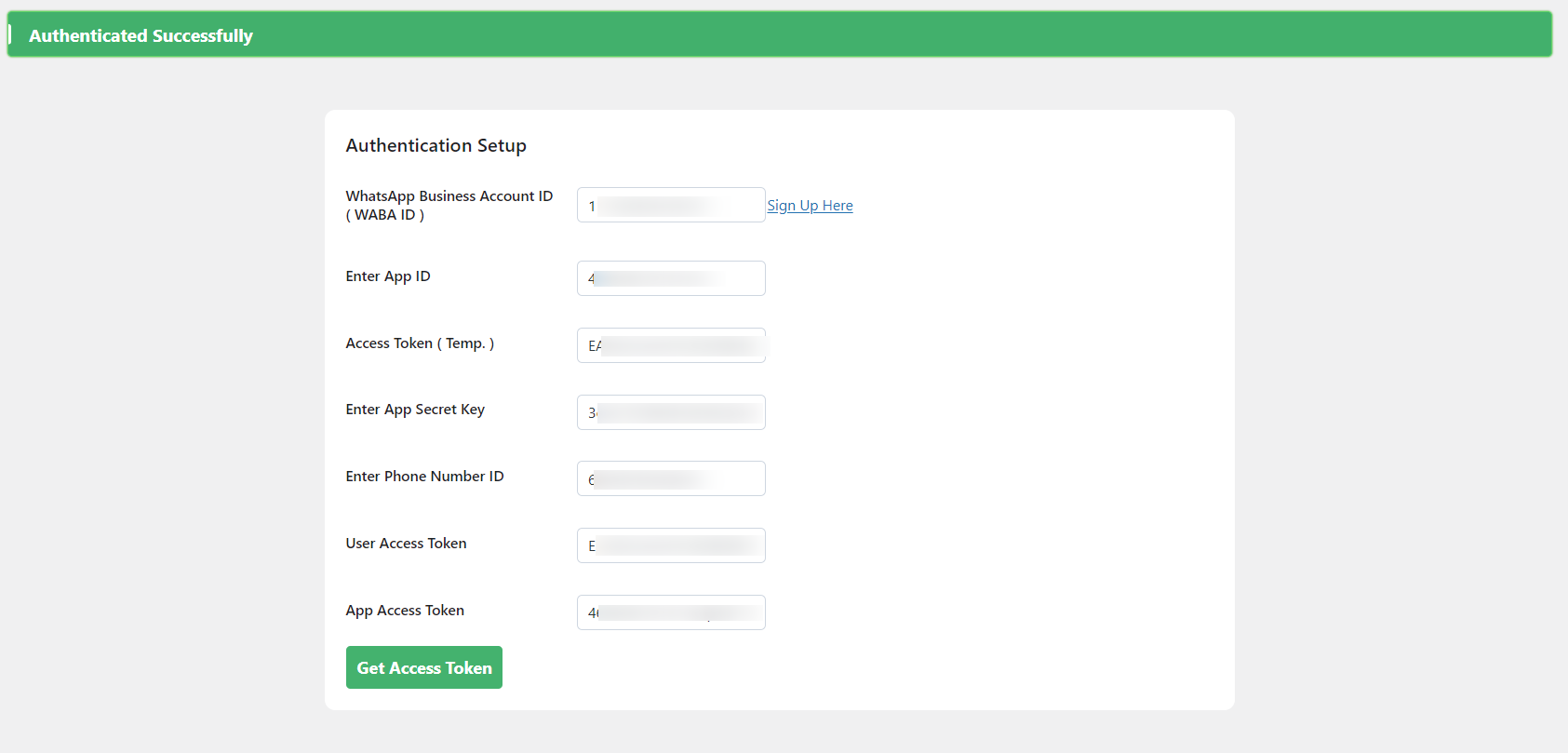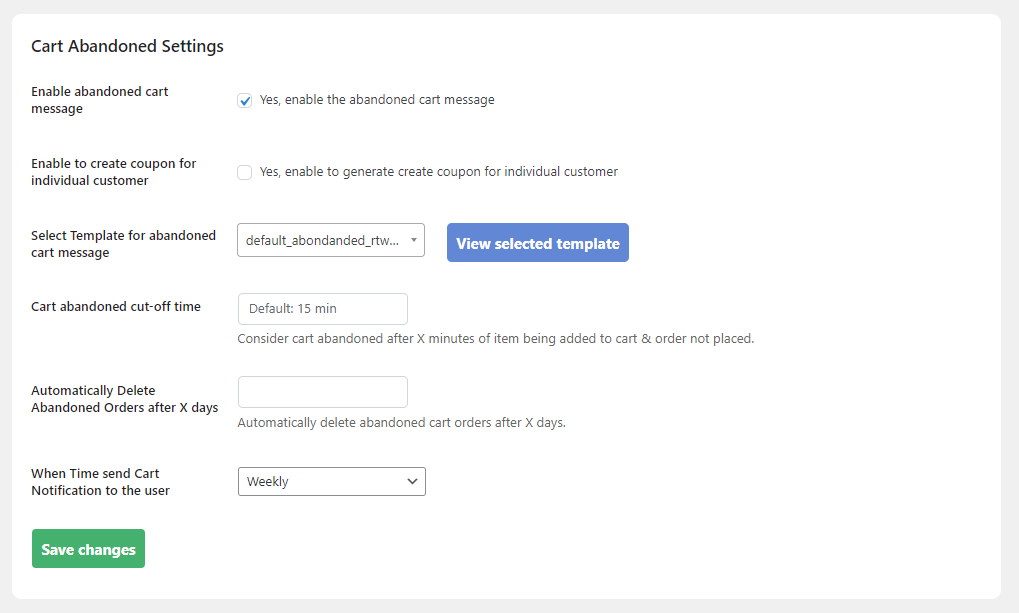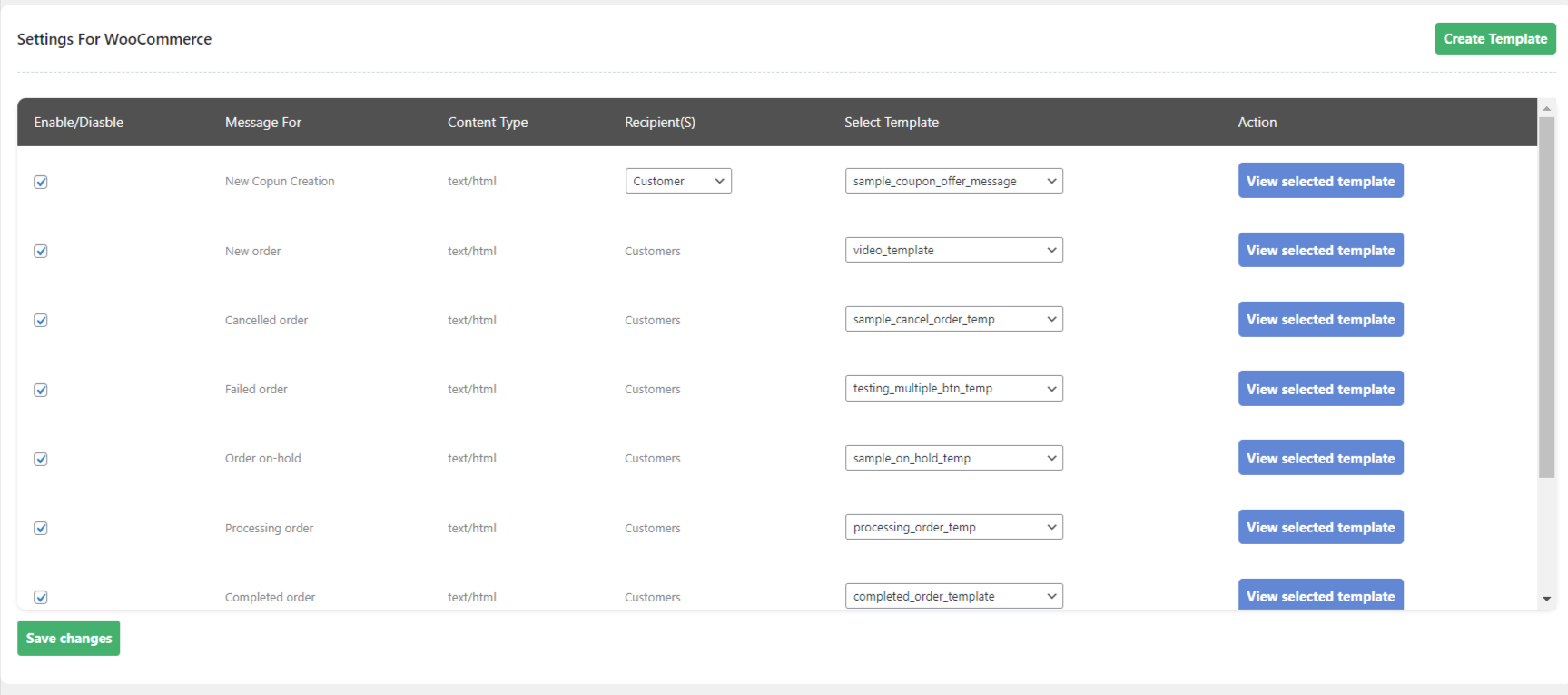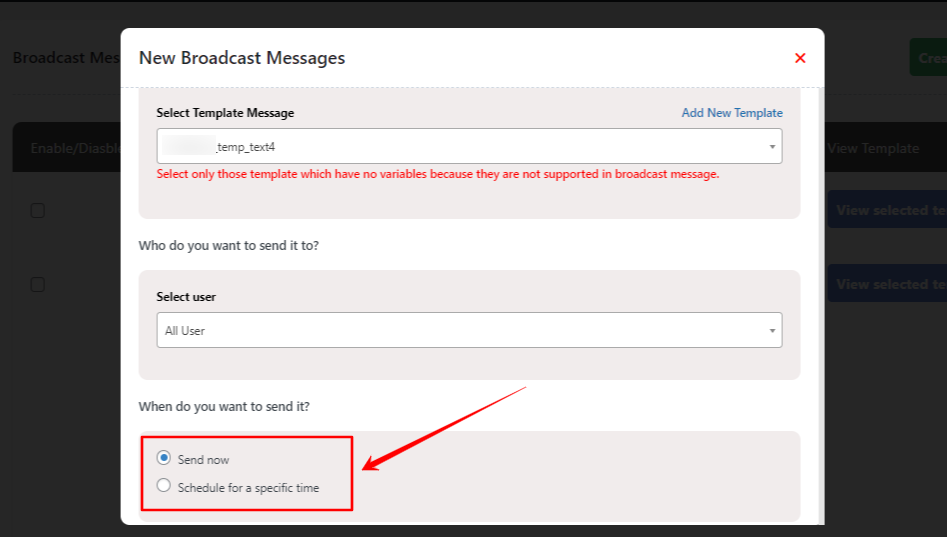In the previous step, we covered the authentication process, ensuring that users are verified and authorized to access the system. Now, with authentication completed, users are ready to proceed with their intended tasks. Once authentication is completed, users receive both a user access token and an app access token, granting them uninterrupted access to the system’s functionalities, thus facilitating smoother and more secure interactions. The current window reflects a seamless transition, presenting a clear pathway for users to engage with the system’s functionalities.
Approved templates
You’ve been provided with a comprehensive selection of templates that have been officially approved by Facebook. 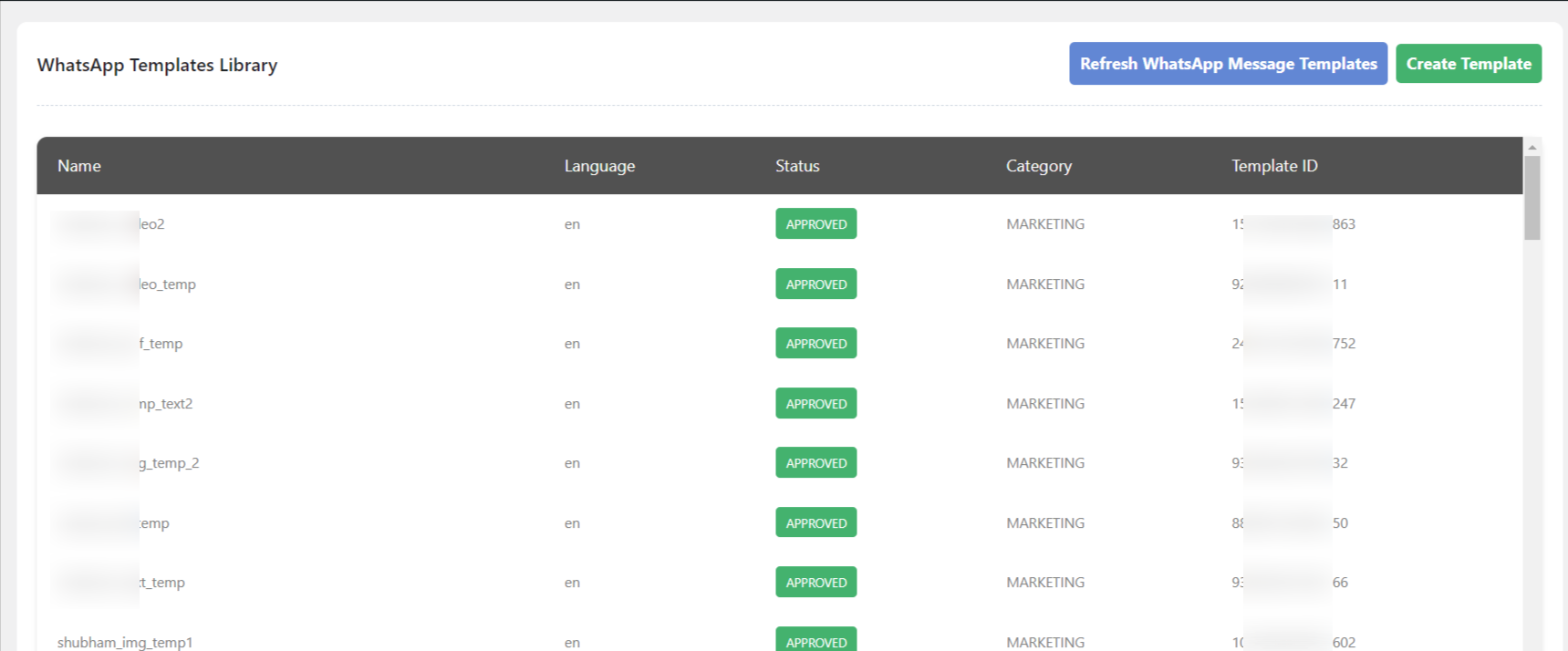
Create Template
To create a template, navigate to the “Template” submenu and click on the “Create Template” button located in the top right corner. After clicking, a new window will appear, prompting you to enter specific details to form your template. This streamlined process ensures efficiency and precision in crafting your desired template for various purposes.
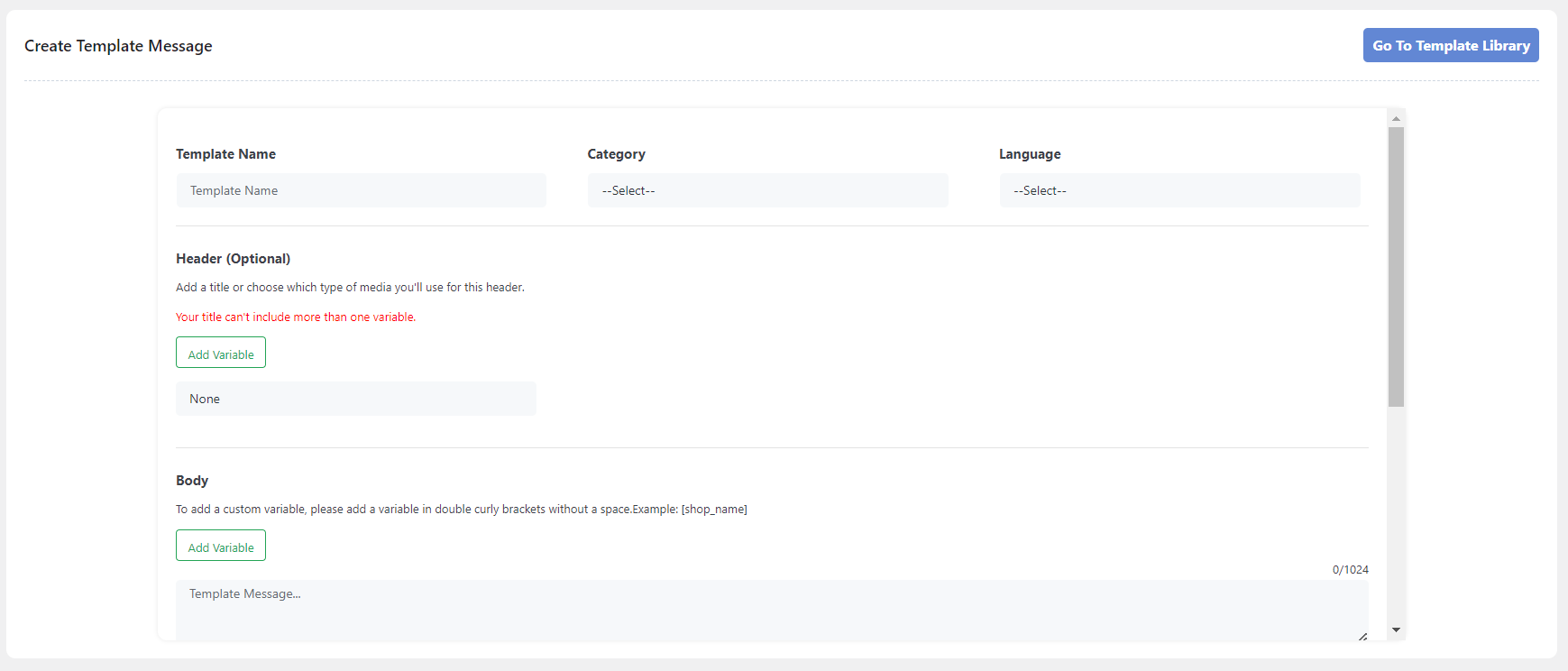
Templates are made up of four primary components that you define when you create a template: header, body, footer, and buttons. The components you choose for each of your templates should be based on your business needs.
- WhatsApp imposes certain limitations on template names to ensure consistency and adherence to their guidelines.
- No Spaces: Template names cannot contain spaces. You should use underscores (_) or camel case to separate words if needed.
- Length Limit: There’s a maximum character limit for template names. Ensure that your template name does not exceed this limit.
- Alphanumeric Characters and Underscores Only: Template names should only consist of alphanumeric characters (letters and numbers) and underscores (_). Special characters, symbols, or emojis are not allowed.
- Descriptive and Relevant: While not a strict limitation, it’s recommended to keep template names descriptive and relevant to the message content they represent. This helps in organizing and managing templates effectively.
- Templates must be categorized as one of the following categories. Categories factor into pricing and the category you designate will be validated at the time of template creation.
- Authentication
- Marketing
- Utility
Refer to our Template Categorization document to determine which category to use when creating templates.
When you send a template creation request, Meta immediately validates its category using our template categorization guidelines. - Language Code: If your template message is multilingual, include the language code in the header section to indicate the language of the message content. This helps WhatsApp route the message to the appropriate users based on their language preferences.
- In the header section, you have the option to include text, video, PDF, or image content. If you choose to use text, you can incorporate only one variable in the header. This flexibility allows you to customize the header according to your preferences and needs, whether you want to convey information, showcase multimedia content, or enhance visual appeal.
- Ensure that when using multiple variables in your WhatsApp template message body, your content sufficiently fills the space without being too sparse. Facebook may reject templates with excessive variables and minimal content. Strike a balance to avoid rejection. Make sure your WhatsApp template message body doesn’t surpass the 1024-character limit, especially when using variables for personalization. Keep it brief and focused to stay within the boundaries.
- The footer section of a WhatsApp template is optional. If you choose to include text, remember that variables are not allowed in this section. Keep it concise and relevant to your message.
- WhatsApp template buttons by Facebook offer Call to Action (CTA) buttons and Quick Replies. CTAs prompt specific actions, while Quick Replies provide predefined response options, streamlining interaction. Both enhance user engagement within the chat interface.
After entering all details correctly and adhering to WhatsApp API guidelines by Facebook, clicking the submit button initiates template approval, typically taking 1 to 3 minutes. Once approved, you can refresh the template table to see the updated status.

Manage Phone Number
WhatsApp Business supports managing customer interactions across multiple phone numbers, making it easier for businesses to handle communication efficiently. Additionally, phone numbers can be verified directly from the admin panel, streamlining the onboarding and setup process to manage all lines in one place seamlessly.
Webhook Details
- URL: This is the webhook endpoint URL where WhatsApp messages or events from the API will be sent. Configuring this URL in your WhatsApp Business Account or Facebook Graph API is essential.
- Token: A token used to authenticate requests between the webhook and the WhatsApp Business API. This token is saved to verify that the requests are valid when enabling the webhook API.
To set up, you should copy the URL and token and configure them in the Facebook Graph API to enable webhook support for WhatsApp Business.
Cart Abandoned Settings
- Enable/Disable Abandoned Message:
Toggle to activate or deactivate the feature of sending abandoned cart messages via WhatsApp to users. - Enable/Disable Coupon Code Message:
Toggle to activate or deactivate the feature of sending coupon codes via WhatsApp to re-engage customers and boost sales. - Select Template:
Choose from a list of approved templates for the abandoned cart message to be sent to users. - Cart Abandoned Cut-off Time:
Admin-defined duration, in minutes, after which a customer’s cart is considered abandoned. - Automatically Delete Abandoned Orders:
Specify the number of days after which abandoned orders should be automatically removed from the system. - Scheduled Send Time:
Set the timing for when the abandoned cart message will be sent to customers, optimizing the likelihood of engagement. Additionally, admins can choose “Set Custom” from the dropdown menu to define a specific time for sending messages.
Automate Templates
- Enable/Disable Template Messages: Toggle to activate or deactivate the sending of template messages on WooCommerce events such as new coupon creation or order completion.
- Select Template for some Event: Admin can choose a specific template to be sent for each selected event. This allows customization and relevance for different scenarios.
- Preview Template: Click on “View Selected Template” to preview the selected template before final submission, ensuring accuracy and appropriateness.
- Message Template Not Visible: If your message template is approved but not showing in the select box, use the “Refresh Template” button to fetch the latest template details. After refreshing, the template you are looking for will be visible.
Campaign/broadcast Message
The WhatsApp campaign broadcast offers two key options: immediate delivery “Send Now” and “scheduled broadcasts”. Scheduled broadcasts allow you to strategically plan messages for specific times, such as hourly, daily, or even on a specific date and time. This ensures better time management and consistent communication. Additionally, you can now tailor your broadcasts by selecting specific users, rather than sending messages based solely on user roles, allowing for more personalized and targeted messaging.
To send messages to selected customers, you need to create groups from the contacts list. In the backend settings (as shown in the image), you can choose specific contacts and assign them to a campaign group. Once grouped, you can use these groups to initiate campaigns.
After creating a group, you can view the associated details, including the group name, the number of contacts in the group, the percentage of total contacts they represent, and the date the group was created. This overview helps in managing and organizing campaigns effectively. You can also take actions like deleting the group if needed.
Respond to customer inquiries
This is the backend panel where the admin can manage and respond to customer queries using a plugin. Once the WhatsApp Business API is successfully integrated with Facebook’s Graph API, admins can interact directly with customers through a messaging interface. The panel allows them to view conversations and send responses in real-time, as shown in the image. Admins can also set an AJAX fetch interval to update the conversation feed automatically.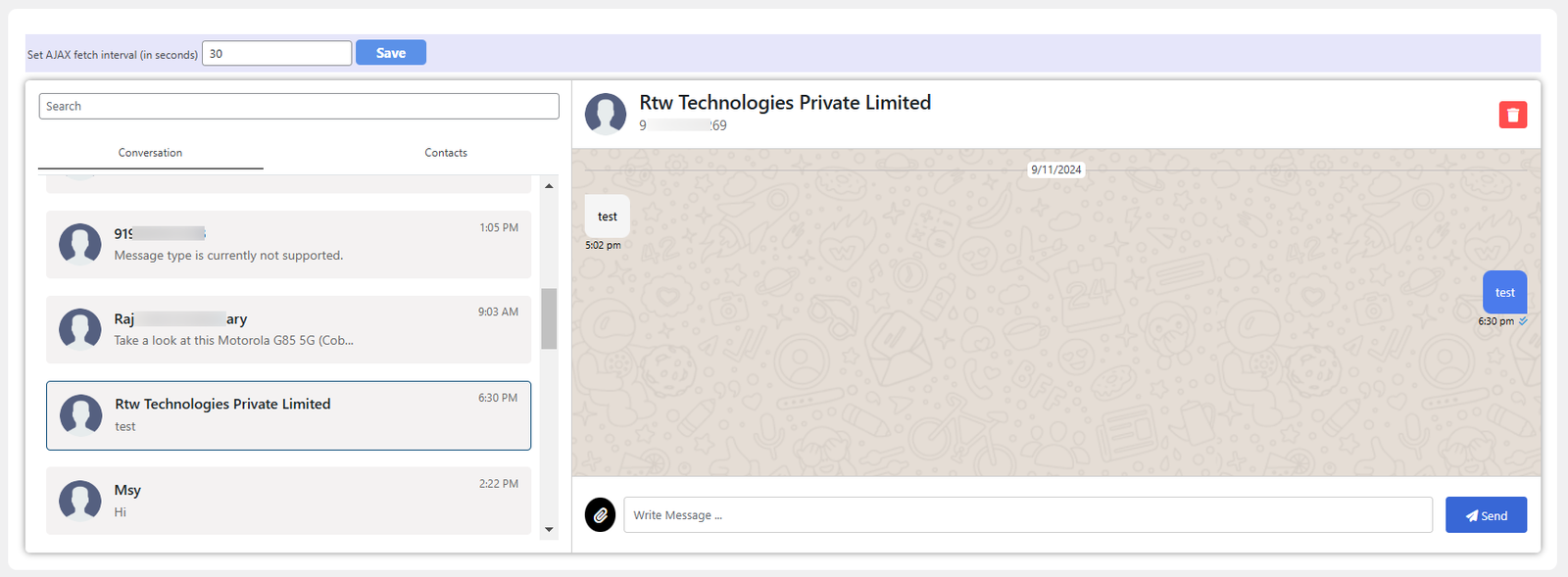
Auto-Replies and Bot Management
In this admin setting, the admin can enable a bot or set up auto-replies to handle common customer queries automatically. This feature helps save time by providing instant responses to frequently asked questions, reducing the need for manual intervention.
